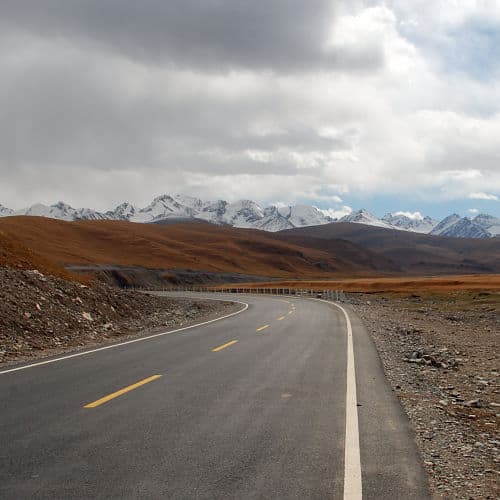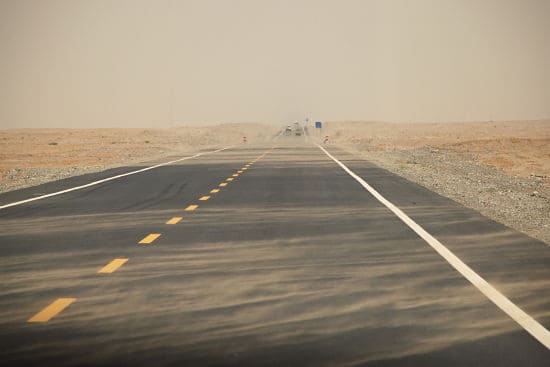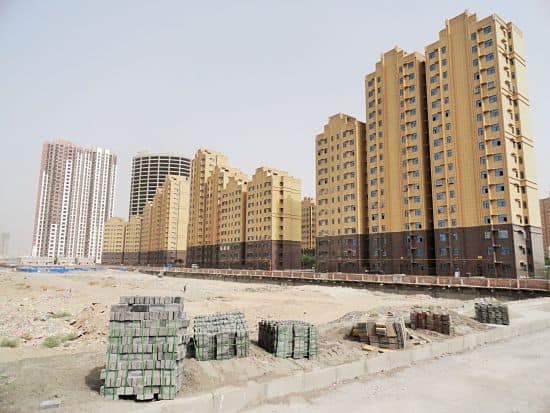In 2011, China’s state-run general content television channel, CCTV-4, launched a monumental 100-part series with a title that translates as “Borderland Journey” (边疆行). The premise of the show is to follow a young, female hostess-adventuress as she hugs the outline of the national territory as closely as possible ultimately circumambulating the territorial margin on its inner side. Adopting a news reportage format, the show’s hostess spends much of the on-camera time recounting the arduousness of physically accessing the national peripheries and commenting on the curious peoples who inhabit them. In one remarkable segment of the series, the hostess follows a middle-aged Uighur man in the volatile western region of Xinjiang, whose periodic task in warm seasons is to clear the growth away from a nearby border marker. The hike from a trailhead to the stone marker is leisurely, so the pair casually chats en route about the seriousness of the job and the vital importance of ensuring the marker is visible amid the tall prairie grasses and shrubs. Upon arrival at the marker, grasses have encroached upon it and the man sets about removing the flora and brushing away dirt and other debris. A fastidious type, the man tends to the marker with careful attention. Before long, the hostess begins to weep, confessing into the camera that she has been overcome by emotion at the sight of the Uighur man’s defense of the national border. The segment ends as the hostess recomposes herself and they return together by foot to the jeep in which she will continue her journey.
The intense nationalist sentiments exhibited in this segment is a regular feature of the television series and reflects profound anxieties around territorial sovereignty in China. As Franck Billé (2014) has documented,
the dissolution of territory – or merely the threat thereof – can ignite passions that generate visceral feelings of loss.
Conversely, earnest displays of territorial defense can spark eruptions of tender affect. The television series also underscores how China’s borderlands persist as spaces of special political-cultural focus in spite of – or, perhaps, because of – on-going transformations. It seems hardly coincidental that this particular television production arose in the wake of deadly inter-ethnic unrest in Tibet in 2008 and in Xinjiang a year later. It also aired after a decade of implementation of the Open the West Campaign (西部大开发), a development program that, among its various and changing agendas, sought to improve territorial integration of China’s vast western regions into the national geo-body through increased investment in infrastructure.
For the past fifteen years, China has invested massively in long-distance transport infrastructure connecting eastern provinces and the long-underfunded western and northern border regions. Parallel to this, the scope of China’s infrastructural activities has expanded on an unprecedented scale into the territories of its western neighbours. Since 2013, all these projects at the westward arc have been discursively subsumed under a new label, or rather a plethora of partially overlapping denominations: the New Silk Road, One Belt One Road Initiative, Belt and Road Initiative, the Silk Road Economic Belt, Maritime Silk Road, and Six Economic Corridors; others are sure to follow in the near future. Whatever the name, the initiative, announced by China’s President Xi Jinping during his visit in Kazakhstan, envisages the construction of infrastructure networks—including roads, railways, sea ports, dry ports, pipelines and more—that will embrace the Eurasian continent and Africa to form an interconnected space of exchange. While the earlier Open the West program targeted the regions along China’s extensive land borders, the Belt and Road Initiative goes a step further and takes Chinese investment, overcapacities in steel production, surplus labour, as well as its geopolitical agenda beyond China’s western multi-ethnic border regions, turning them into ‘corridors’ and ‘passages’ leading to foreign markets (OLGBRI 2017).
Since the plan was announced, it has attracted massive academic and media attention focusing on the infrastructures being built and their future potentialities. It was against this backdrop that we initiated a conference titled On Edge: China’s Frontiers in a Time of Change. The conference was aimed at exploring shifts in China’s territorial margins. Because it is quickly becoming nearly impossible to talk of China’s border regions and conduct research there not through the lens of the Belt and Road Initiative (BRI) – definitely a success for Chinese political marketing specialists – the workshop deliberately sought to integrate a diversity of conceptual framings for understanding borderland transformations beyond state-imposed normative structures. The different foci of analyses pertained instead to processes of bordering, ‘edging’, containing, including, excluding, dislocating and other multiple forms of positioning occurring in and across China’s borderlands. The main motivation of the conference was to provide a focused space-time to explore and debate the spatialities and subjectivities that these various processes have generated and erased in the past decades. While the BRI gives a new twist to many of these processes, it is important to remember that China’s borderlands have been subjected to constant state development campaigns since 1949 when the People’s Republic of China was established. Each of these generated new subjectivities and socio-material relationships, but each of them also produced new layers of socio-material ruins. The BRI is currently inscribing itself onto this ambiguous terrain. Our hope was to devise new ways of exploring these complex temporal and spatial conditions.
A central aim of our workshop was to shed light on surprising connections, unconventional alliances and complex entwinements that render China’s borderlands a porous and multilayered space of interaction and connection, rather than merely ‘marginal’ or ‘peripheral’ in the state-dominated sense. In the context of China’s borderlands, we discern both a need and an opportunity to push existing theorizations of the relationships between place, capital, material practices and subjectivities pioneered within critical geography by such scholars as Henri Lefebvre (1991), David Harvey (1989), and Doreen Massey (1994).
Thories developed in the West, broadly defined, turn out to be difficult to meaningfully apply in China’s frontier regions, where national security, management of border populations, and surveillance regimes have all nested in relations that are not readily reduced to the logics of capitalist space production.
Accordingly, we find it necessary to expand the existing debates by reflecting on them through the explorations of China’s multiple edges, transnational ethnic, religious and economic linkages as well as contested histories, materialities and subjectivities.
A full exploration of these themes demanded a trans-disciplinary mindset and methodological approach. Hence, the ‘On Edge’ workshop brought together historians, human geographers, and social anthropologists. Combined with focused discussion dedicated to individual research contributions, the workshop also featured casual hikes through the surrounding Bernese Alps. During these latter portions of the workshop, termed “walk-and-talk” sessions, participants informally engaged in discussion about their respective topics related to the workshop. This unstructured approach proved highly generative: we all learned more about each other’s research and the process of preparing the workshop papers, but also, in a declared attempt to humanize the research process, about how scholarly endeavors figure in and affect our life trajectories.

From left: Madlen Kobi, Alessandro Rippa, Verena La Mela, Aline von Atzigen, Xiaoping Sun, Mareile Flitsch, Li Zhang, Max Woodworth, Karin Dean, Thomas White, Travis Klingberg, Darren Byler, Judd Kinzley and Agnieszka Joniak-Lüthi.
The workshop ‘On Edge: China’s Frontiers in a Time of Change’ took place in Kandersteg (Switzerland) between 12 and 14 October 2017 and was made possible through the generous support of the Swiss National Science Foundation and the Ethnographic Museum in Zurich.
All images courtesy of Agnieszka Joniak-Lüthi.
References:
Billé, Franck. 2014. Territorial phantom pains (and other cartographic anxieties). Environment and Planning D: Society and Space 32 (1): 163-178.
Harvey, David. 1989. The condition of postmodernity: An enquiry into the origins of cultural change. Oxford: Blackwell.
Lefebvre, Henri. 1991. The Production of Space. Malden, Oxford, Carlton: Blackwell Publishing.
Massey, Doreen. 1994. Space, Place, and Gender. Minneapolis: University of Minnesota Press.
OLGBRI (Office of the Leading Group for the Belt and Road Initiative). 2017. Building the Belt and Road: Concept, Practice and China’s Contribution. Beijing: Foreign Languages Press.












